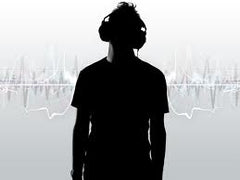
By converting objects into their auditory counterparts, blind subjects in a study conducted by The Hebrew University were able to “see” the objects through sound, seeing through
hearing. The study,
published online in the journal
Neuron, revolutionizes the way scientists view the brain, and the way blind people view the world.
Seeing by Hearing: Try to Wrap Your Head Around This
A group of congenitally fully blind adults were trained to use their intact auditory abilities to read, and recognize images like shapes, faces, houses and cellphones. Each of these objects was converted to a sound, which was recognized by the brain and converted into an image – no vision needed.
In an interview with the BBC, Dr. Amir Medi, who spearheaded the research, explains that pictures of objects were processed and “encoded in a new auditory or musical language that the blind need to learn.” Though it sounds odd, Dr. Medi notes that bats and dolphins use the same process to detect their surroundings.
Seeing by Hearing: Sounds Green to Me
Not only can
sounds project images, but they can also project images in black-and-white or color. This mechanism has been dubbed “eye music.” Based on the instrument playing the music, the blind can “see” the color of the object being played, due to the way they interpret what they're
hearing. With enough training, the blind can also reach for the objects they learn to see.
The study was designed to find out more about the
visual word form area (VWFA), which scientists have isolated as the brain’s reading and letter recognition center. In the blind, this area was thought to be undeveloped. Yet when blind subjects were taught to “see” objects through sound, x-rays of the brain showed that the VWFA lit up with activity, just as it did in sighted subjects. This proved that the VWFA does not need visual input to function.
by Estie Neff
 By converting objects into their auditory counterparts, blind subjects in a study conducted by The Hebrew University were able to “see” the objects through sound, seeing through hearing. The study, published online in the journal Neuron, revolutionizes the way scientists view the brain, and the way blind people view the world.
By converting objects into their auditory counterparts, blind subjects in a study conducted by The Hebrew University were able to “see” the objects through sound, seeing through hearing. The study, published online in the journal Neuron, revolutionizes the way scientists view the brain, and the way blind people view the world.
 By converting objects into their auditory counterparts, blind subjects in a study conducted by The Hebrew University were able to “see” the objects through sound, seeing through hearing. The study, published online in the journal Neuron, revolutionizes the way scientists view the brain, and the way blind people view the world.
By converting objects into their auditory counterparts, blind subjects in a study conducted by The Hebrew University were able to “see” the objects through sound, seeing through hearing. The study, published online in the journal Neuron, revolutionizes the way scientists view the brain, and the way blind people view the world.





